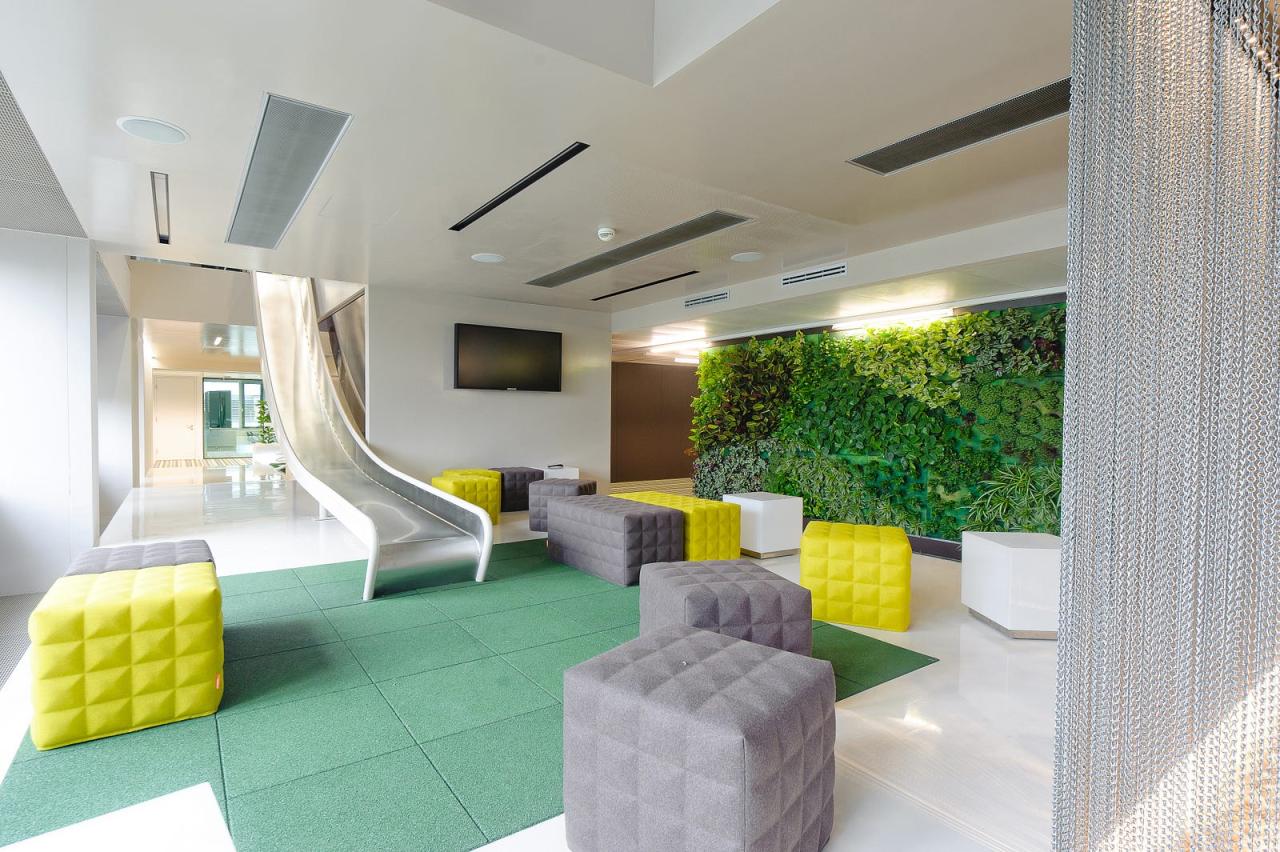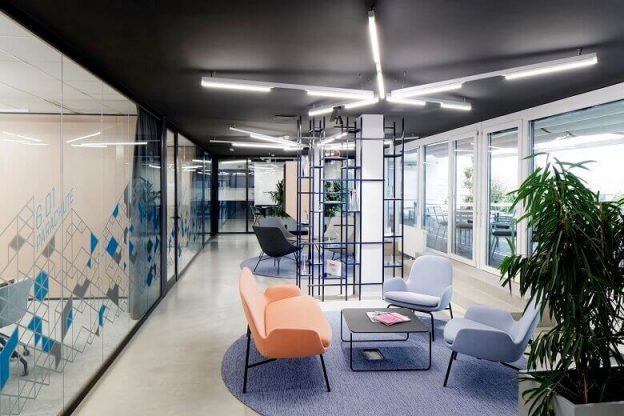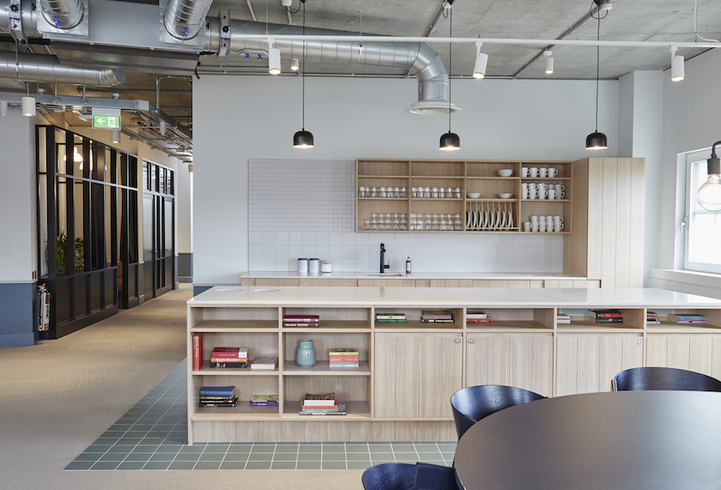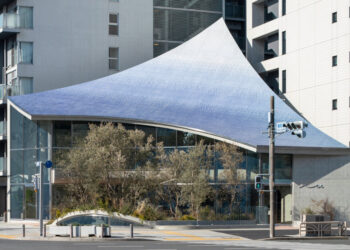In the fast-paced world of 2025, the office is no longer just a place where work happens; it’s a dynamic environment that profoundly influences our productivity, creativity, and overall well-being. The traditional cubicle farm, once a symbol of corporate efficiency, is now seen as a relic of the past, as forward-thinking companies recognize that a healthy workplace is a more profitable and innovative one. Creating a healthy workplace design is a holistic approach that integrates principles of psychology, ergonomics, and environmental science to build a space that supports the people within it. It’s about moving beyond superficial perks and creating a truly restorative and inspiring environment. This comprehensive guide will take you on a deep dive into the philosophy and practice of designing a healthy workplace. We’ll explore the key elements, from the strategic use of light and color to the importance of ergonomic furniture and flexible spaces. Whether you’re a business owner, an HR professional, or simply interested in improving your own work environment, this article will provide a clear and actionable blueprint for fostering a culture of wellness through intelligent design.
The Core Principles of Healthy Workplace Design

The concept of a healthy workplace is built on a foundation of several key principles. These are not just aesthetic choices but are rooted in scientific research on human behavior and health.
A. Prioritizing Ergonomics and Comfort
Ergonomics is the science of designing a work environment to fit the worker, rather than forcing the worker to fit the environment. Ignoring ergonomics can lead to a host of problems, from chronic back pain and repetitive strain injuries to mental fatigue.
- Adjustable Furniture: The cornerstone of an ergonomic workspace is adjustable furniture. Desks that can be raised or lowered for standing work and chairs with adjustable lumbar support, armrests, and seat depth are essential. This allows each individual to customize their workspace to their body type and needs, promoting better posture and reducing strain.
- Proper Monitor Placement: The monitor should be at eye level and an arm’s length away. This prevents neck and eye strain. For those who use laptops, an external monitor or a stand is crucial to achieve proper alignment.
- Ergonomic Accessories: Small accessories can make a big difference. Ergonomic keyboards and mice, footrests, and wrist supports help maintain a neutral position and prevent injuries like carpal tunnel syndrome.
B. Harnessing the Power of Biophilic Design
Biophilic design is the practice of connecting humans with nature in the built environment. As we spend a vast majority of our time indoors, bringing the outdoors in has a measurable positive impact on our well-being.
- Integrating Natural Light: Natural light is a powerful tool. It regulates our circadian rhythm, which in turn improves sleep quality and reduces mental fatigue. Position desks near windows and use large, unobstructed windows to flood the space with daylight.
- Adding Plants and Greenery: Plants are more than just decoration; they are living components that improve air quality by filtering out toxins. They also have a calming effect and have been shown to reduce stress and boost creativity. Consider adding a living wall, potted plants, or even a small indoor garden.
- Using Natural Materials: Incorporate natural materials like wood, stone, and bamboo into the design. The texture and warmth of these materials create a sense of calm and connection to the natural world.
C. The Psychology of Color and Lighting
The colors and lighting in a workspace have a profound psychological impact on our mood, focus, and energy levels.
- Strategic Use of Color: Cool colors like blue and green are known for their calming and focus-enhancing properties, making them ideal for areas that require concentration. Warm colors like yellow and orange can be used in collaborative or break areas to foster creativity and energy.
- Balanced Lighting: Avoid harsh, fluorescent overhead lighting. Instead, use a combination of natural light, warm task lighting, and ambient light to create a layered and comfortable environment. Lighting that can be adjusted in color temperature throughout the day can also help support the body’s natural circadian rhythm.
Designing a Dynamic and Flexible Workspace
The modern workforce is diverse, with varying work styles and needs. A healthy workplace design acknowledges this and provides a variety of spaces to accommodate different tasks.
A. Creating Different Zones for Different Tasks
An open-plan office can be great for collaboration, but it can be a nightmare for those who need quiet time to focus. A well-designed office provides a mix of zones.
- Quiet Zones: These are areas with minimal distractions, designed for deep, focused work. They should be free from conversation and have noise-canceling measures in place.
- Collaborative Zones: These are spaces designed to foster interaction and teamwork. They can include comfortable seating, whiteboards, and large screens for presentations.
- Social and Rest Zones: A dedicated break room or social hub is crucial for employee well-being. These areas should be a complete departure from the work environment, offering a place to relax, eat, and socialize.
B. Embracing Flexibility and Mobility
A healthy workspace is not a static one. It should allow employees to move and change their environment throughout the day.
- Standing Desks: Offering standing desks provides employees with the option to change their posture, which can reduce the risk of back pain and improve circulation.
- Mobile Furniture: Furniture with wheels can be easily rearranged to accommodate different team sizes and tasks, fostering a more dynamic and adaptable environment.
- Outdoor Workspaces: If possible, create an outdoor workspace. Working outside, even for a short period, can be incredibly beneficial for mental health and creativity.
The Practical Application

Transforming a workplace into a healthy environment is a process that requires careful planning and a commitment to employee well-being.
A. Conduct an Assessment
Start by gathering feedback from your employees. What are their pain points? Do they feel like they have enough quiet space? Is the lighting too harsh? A survey or a series of focus groups can provide invaluable insights into what needs to be changed.
B. Create a Phased Plan
A complete office overhaul can be expensive and disruptive. Create a phased plan that prioritizes the most impactful changes first. For example, start by upgrading a few chairs, adding plants, and improving the lighting in a key area.
C. Invest in Quality over Quantity
When it comes to ergonomic furniture, quality is paramount. A cheap, non-adjustable chair can do more harm than good. Investing in high-quality furniture and materials will pay off in the long run with fewer health complaints and a more productive workforce.
D. Educate Employees
Provide training and resources on how to use ergonomic furniture correctly. Encourage employees to take regular breaks, stretch, and move around throughout the day. A healthy workplace is as much about habits as it is about design.
E. Monitor and Adapt
A healthy workplace is not a one-time project; it’s an ongoing process. Regularly gather feedback and make adjustments as needed. A workspace that works well today might not meet the needs of your team tomorrow.
The Benefits Beyond the Office
The benefits of a healthy workplace design extend far beyond the physical space itself. It has a profound impact on the entire organization.
A. Increased Productivity and Creativity
A comfortable and well-designed environment reduces physical and mental fatigue, allowing employees to focus for longer periods. It also fosters creativity by providing a stimulating and inspiring space.
B. Enhanced Employee Morale and Retention
A company that invests in its employees’ well-being is a company that people want to work for. A healthy workplace is a powerful recruitment and retention tool. It signals to employees that they are valued, leading to higher morale and a stronger sense of loyalty.
C. Reduced Absenteeism and Healthcare Costs
By preventing chronic pain and reducing stress, a healthy workplace can lead to a significant reduction in sick days and long-term healthcare costs. It is a proactive investment in the health of your workforce.
D. A Stronger Company Culture
A well-designed office can be a symbol of a company’s commitment to its values. It can foster a culture of well-being, collaboration, and innovation, which can have a ripple effect throughout the entire organization.
Conclusion
Creating a healthy workplace design is a powerful and strategic investment in the most valuable asset a company has: its people. It is a philosophy that recognizes that our environment and our well-being are intrinsically linked. By thoughtfully integrating ergonomic principles, the restorative power of nature, and the psychological impact of light and color, you can build a space that is not only visually stunning but also supports the physical and mental health of every person who works within it.
The journey to a healthy workplace is an ongoing one, but the rewards are immense. It leads to a more productive, creative, and engaged workforce. It reduces costs associated with absenteeism and healthcare and acts as a magnet for top talent. This guide has provided you with the foundational knowledge and practical steps to begin that journey. By starting small, gathering feedback, and committing to a culture of wellness, you can transform your office into a space that not only fuels business growth but also enriches the lives of everyone who enters it. In the end, a healthy workplace is not just good for business; it’s good for humanity.









